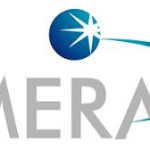Most IC designers I talk to really enjoy the creative process of developing a new SoC design, debugging it, then watching it go into production. They don’t really like spending time learning how to make their EDA tools work together in an optimal IC design flow where they may have a dozen tools each with dozens of options. Fortunately… Read More
Tag: synopsys
Analog Panel Discussion at DesignCon
DesignCon is coming up and the panel discussions look very interesting this year. The one panel session that I recommend most is called, “Analog and Mixed-Signal Design and Verification” which is moderated by Brian Bailey, one of my former Mentor Graphics buddies and fellow Oregonian.… Read More
EDA Tool Flow at MoSys Plus Design Data Management
I’ve read about MoSys over the years and had the chance this week to interview Nani Subraminian, Engineering Manager about the types of EDA tools that they use and how design data management has been deployed to keep the design process organized. My background includes both DRAM and SRAM design, so I’ve been curious… Read More
What is a Hierarchical SPICE Circuit Simulator?
Hierarchy is used in IC designs at many abstraction levels to help describe a design in a compact format:
- Mask Data
- IC Layout
- Schematic Netlists
- Gate level netlists
- RTL netlists
But the question and focus for this blog is, “What is a hierarchical SPICE Circuit Simulator?”… Read More
Memory Controller IP, battle field where Cadence and Synopsys are really fighting face to face. Today let’s have a look at Cadence’s strategy.
I have shared with you last year some strategic information released by Cadence in April about their IP strategy, more specifically about the launch of the DDR4 Controller IP. And try to understand Cadence strategy about Interface IP in general (USB, PCIe, SATA, DDRn, HDMI, MIPI…) and how Cadence is positioned in respect with their… Read More
Imera Virtual Fabric
Virtual fabric sounds like something that would be good for making the emperor’s new clothes. I talked today to Les Spruiell of Imera to find out what it really is.
Anyone who has worked as either a designer or as an EDA engineer has had the problem of a customer who has a problem but can’t send you the design since it is (a)… Read More
What Will 2012 Bring The Semiconductor Ecosystem?
During my annual holiday meal with one of my favorite EDA icons some rather bold predictions were made. On his side it was more of what he would LIKE to see happen, on my side it was more of what will HAVE to happen for the semiconductor ecosystem to thrive in the coming years.
Mike Gianfagna (Viva Italia!) spent 15+ years with RCA/GE Semiconductor… Read More
Synopsys Eats Magma: What Really Happened with Winners and Losers!
Conspiracy theories abound! The inside story of the Synopsys (SNPS) acquisition of Magma (LAVA) brings us back to the 1990’s tech boom with shady investment bankers and pump/dump schemes. After scanning my memory banks and digging around Silicon Valley for skeletons with a backhoe here is what I found out:
The Commission… Read More
HSPICE – I Didn’t Know That About IC Circuit Simulation
HSPICE is over 30 years old, which is a testimony of how solid the circuit simulator has been and how widely used it is. To stay competitive the HSPICE developers have to innovate or the product will slowly loose ground to the many other simulator choices. I listened to the webinar last week to find out what was new with HSPICE.
Interoperability Forum
Earlier this week I went to the Synopsys Interoperability Forum. The big news of the day turned out to be Synopsys wanting to be more than interoperable with Magma, but that only got announced after we’d all gone away.
Philippe Margashack of ST opened, reviewing his slides from a presentation at the same forum from 10 years … Read More











